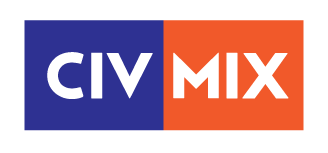Earlier this week I taught my last day of classes of the year to sixth grade students. A teacher had requested a lesson for Pride month, so I revised a presentation I had put together last year, updating statistics and the list of titles in our collection that feature LGBTQ characters and scheduled time with all of the ELA teachers.
Over three days I repeated the lesson 15 times. Class wasn’t exactly the same twice, but it was a good class and one in which I’ve never had a single disciplinary issue. The kids pay attention and we have thoughtful conversations.
The timing of the instruction couldn’t have been better. Pride was celebrated last weekend in Albany and it was an incredible day with weather that was stunning and a crowd which was spectacular. It was a fantastic celebration.
This year, I opened class by asking if any of the kids had been to the Pride Festival in Albany. I let them know I had been there and that had seen a number of students, both current and former, during the parade and at the events that followed in Washington Park.
I talked about what a wonderful, positive atmosphere there had been – not a single raised voice or aggressive shout. There weren’t any police officers that I noticed, yet there had been a tremendous sense of safety present. It was great.
I said I would never want to take the festivities away from the LGBTQ+ community, but that everyone is able to attend an event like this. It doesn’t matter how you dress or identify or who you’re holding hands with…everyone was welcome.
Then, I told them about the 31 (white) men wearing coordinating clothes (garanimals, anyone?) who were observed climbing into a Uhaul truck and subsequently intercepted within a mile of the Idahoan Pride Festival which they, the white supremacist group in the rented moving truck, planned to disrupt.
If we can’t all agree that those 31 young, white men who intended to commit hate crimes, and were intent upon creating chaos in the midst of a celebration, are a societal blight, we are beyond repair, I’m afraid.
The kids and I had a conversation about what percentage of the youth population identifies as LGBTQ+ (close to 10%) and what percentage of youths in that population have reported being harassed, bullied or physically assaulted (36% ) and what it might mean to provide a safe, comfortable community for everyone, regardless of orientation, preference or identification.
We touched upon the importance of all students being able to recognize themselves in the world, to have role models and representation in the media, sports, politics and the arts. Names were tossed around – Lil Nas X, Freddie Mercury and Demi Lovato repeatedly, and I hinted about the first openly gay MLB player, Glenn Burke, who we would be talking more about later in class. When Megan Rapinoe’s name was mentioned, I couldn’t help but mention that the women’s national soccer team, until recently, made significantly less money than men’s national team.
But, that would be another lesson…
We ended with a talk about books and I read passages from as many as possible. I must confess that I switch it up, selecting different passages to share,depending on the class vibe (teachers know, they all have one) and the ratio of conversation and lecture time.
The books we consistently discussed were the following three: A High Five for Glenn Burke, by Phil Bildner, Melissa (formerly titled George), by Alex Gino, and Different Kinds of Fruit, by Kyle Lukoff. These young adult novels featured characters of various ages between 8-13 and represented a mixture of boys and girls. In my professional opinion, which I’m entitled to after nearly 30 years in the field, it was a good range of experiences and grade levels.
I read passages that described the homophobia Glenn Burke experienced as the first openly gay Major League Baseball player and the despair an elementary student, identified as male at birth but convinced they are female, feels after their audition for a female role in a class production is misinterpreted as a prank. Another excerpt explaining chosen pronouns was also shared, as a nonbinary fictional character stated their own preference for they/them.
The mood and message was one of acceptance and celebration and equality. There was no explicit content or “grooming,” whatever that is. Honestly, it made me feel the same way I want my LGBTQ+ students to feel: proud.



